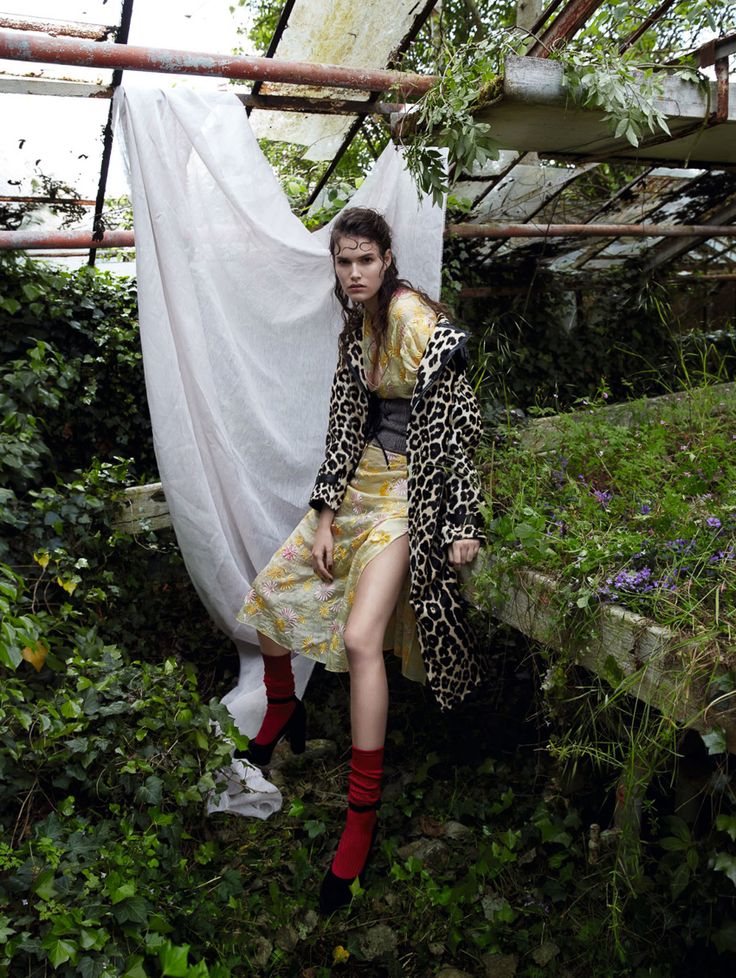graphic, @vibetribecreative
I have no experience in the world of natural dyes but have always been curious about it. A chance recommendation led me to Natalie Fragola, alchemist of color, nature, and owner of creative studio Obra Obscura. Natalie creates incredible textile designs through an intricate and fascinating dye process using natural resources, i.e. plants. Her artistry runs the full spectrum with clients ranging from the New York City Ballet to J.Crew. As Natalie explained the art-meets-science process of pulling color from plants all I could think was, this girl is so cool.
I was very grateful for the lesson, not only in the dye process, but also the importance of sustainability. After leaving I felt truly inspired by someone who brings new meaning to the term plant based. #itsplantporn
photos by NADIRAH ZAKARIYA
IPP: WHAT'S YOUR BACKGROUND AND WHAT LED TO THE START OF OBRA OBSCURA?
NF: I grew up in Pittsburgh Pennsylvania, but my parent are originally from Argentina. When they immigrated in the 70s, the idea was to move here [USA] for a little while then move back but they never did. So I grew up in a bicultural household and we had a lot of backyard and wooded areas that I ran off and hung out in as a kid. I wouldn’t really start to appreciate that until I moved to New York. My father was a doctor and my mother starting doing art as therapy, painting. Her work as an artist influenced me.
For college I went to Savannah College of Art and Design originally for fashion design. Two years prior I had a stint at Old Dominion University near Virginia Beach. I studied biology there thinking I would work in a lab or be a medical illustrator, but I was feeling a more artistic path so I decided to go to art school. I pursued fashion at SCAD and quickly picked up a second major in fibers because I wasn’t learning enough about fabric and textiles. It was in the fibers department that I started working with dyes seriously. There's a lot of science involved. I really became engaged with natural color and fusing these different world together: healing arts and the chemistry behind natural dyes.
I finished my two majors and moved to New York City. The idea was fibers would be my artistic outlet and helped me become stronger in fashion as well. I got a job as an assistant fashion designer at a small label and then the economy went bust and I lost my job. I was doing some small batch dye jobs for my company on the side, so I decided to try freelancing. During the first couple of years the work was very sparse because the economy was so bad, but I just felt that I was thrown into this and needed to be resourceful and seek out projects and just fill in the gaps. It felt very backwards at the time because I was on this very structured path looking at corporate jobs, but it was blessing in disguise.
I continued working with fashion clients and then I picked up a job as a colorist and dyer for company that produces all the costumes for Broadway and the New York Ballet. It was there that I started learning a lot about chemical dyes and color matching. But in the costume industry I felt like I was getting sick from the synthetic dyes, the air wasn’t clean, and it completely freaked me out. I can't imagine having a job and a career that I'm building where, if I got pregnant for example, I couldn’t go to. I left that job and continued my own projects and pursuing natural dyes.
My company Obra Obscura is a creative studio that offers an array of services with a specialty in natural dyes and color.
Overalls designed and hand dyed by Nattalie
IPP: DESCRIBE THE natural dye PROCESS.
NF: First you need natural fibers, made from a plant or animal. Then you take that in its pure form and scour it from any kind of sizing (chemical or oil) that may be on it.
Color gets extracted from a source. Say you have your color extract, for example a Hopi sunflower, which you can extract color many ways. The part that makes the color permanent is a pH exchange in the dye bath. That will change it from looking bright to dull and permanent. Every plant or animal source for color has a different way of binding to the fabric. The pH of the dye bath is changed by acidic or alkaline things, for example lemon juice for acidic and baking soda for alkaline. Once you have that you’re making this permanent bond and then you can play around with shifting pH to modify color.
IPP: WHAT INSPIRES YOU?
NF: I definitely work with dreams and subconscious thoughts that come out of nowhere. Beyond that nature is a very inspiring source and I find that telling a story visually and color really excites me. I’m always inspired by very simple things. I listen to records, I go for a walk- I love walking around New York City. My friends are also inspiring, I love seeing what they’re up to.
Natalie's beautiful plant-filled bome.
Cochineal insects in their dried form (left); when soaked the bugs expand a beautiful red color is extracted.
IPP: WHAT IS YOUR SPIRIT PLANT AND WHY?
NF: Black Hollyhock blossom. Used in natural dyes, it gives off blue, which is very interesting because it is very difficult to get blue color naturally. I love that it has these medicinal origins and it creates color. The color of the actual blossom is a dark, deep, blood red. Super dramatic. I'm kind of a contradiction of light and dark like that.
Thank you Natalie!
See more of Natalie's beautiful work on her website: Obra Obscura
Instagram: @obraobscura




































